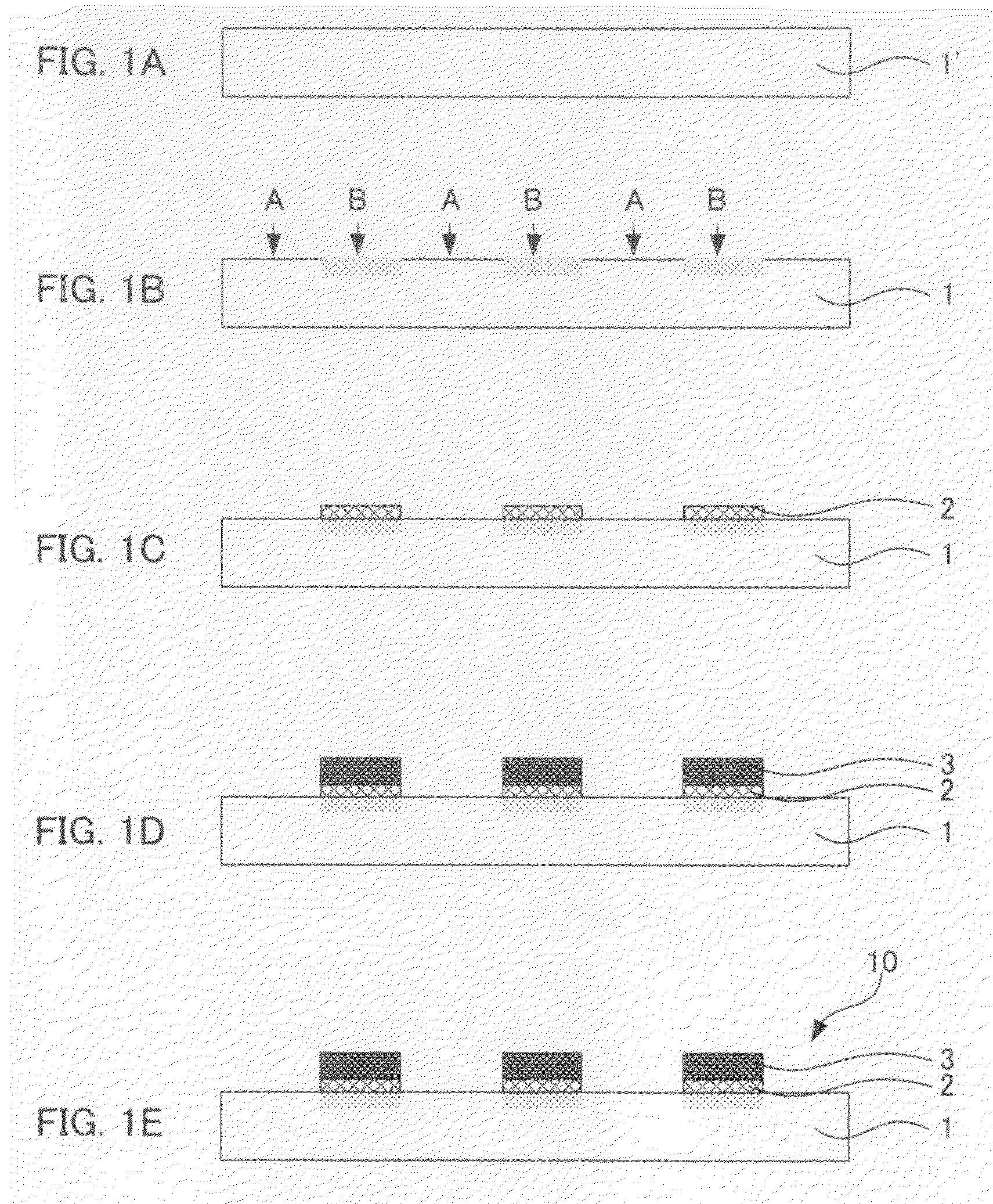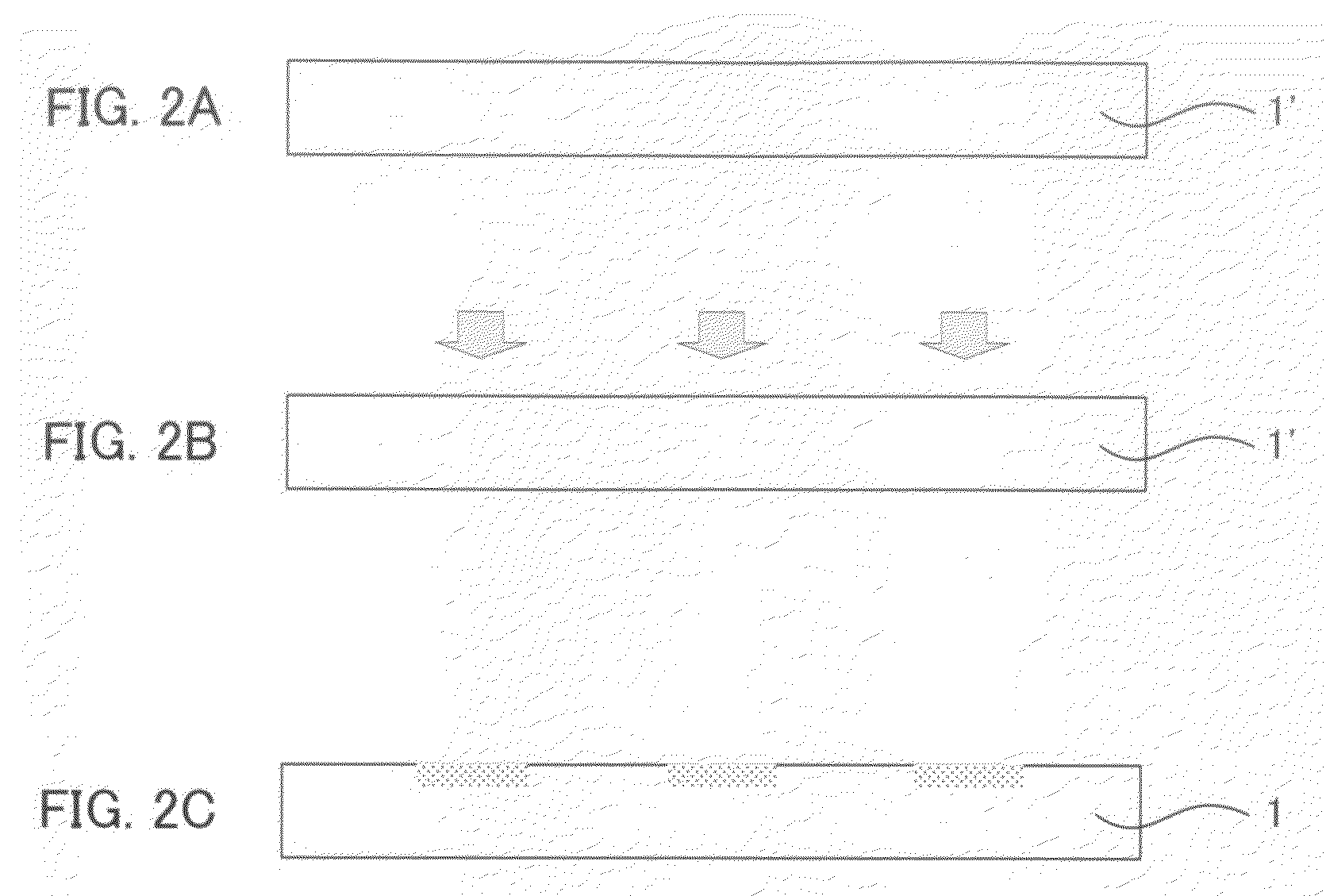Method for manufacturing organic transistor and organic transistor
a manufacturing method and organic semiconductor technology, applied in the direction of thermoelectric device junction materials, electrical apparatus, semiconductor devices, etc., can solve the problems of poor product quality, complicated process, high cost, etc., and achieve the effects of improving the crystal properties of organic semiconductor materials, easy removal, and high reliability
- Summary
- Abstract
- Description
- Claims
- Application Information
AI Technical Summary
Benefits of technology
Problems solved by technology
Method used
Image
Examples
first embodiment
Hydrophobic Substrate of First Embodiment
[0047]First, a hydrophobic substrate of the first embodiment will be explained. The hydrophobic substrate of the present embodiment is not particularly limited as long as the substrate is made of a hydrophobic material which can be provided with hydrophilicity by conducting the predetermined hydrophilic treatment. Such hydrophobic material may be an organic material or an inorganic material. As the hydrophobic material used for the hydrophobic. substrate of the present embodiment, materials such as polyimide, polyester, polyethylene, polyphenylene sulfide, polyparaxylene, polyethylene terephthalate, polyethylene naphthalate, and polydimethylsiloxane can be cited. Any of these hydrophobic materials can be used in the present embodiment. Further, only a hydrophobic material of a single kind, or alternatively, hydrophobic materials of plural kinds may be used.
[0048]As a thickness of the hydrophobic substrate of the present embodiment, it is not ...
second embodiment
Hydrophobic Substrate of Second Embodiment
[0049]Next, a hydrophobic substrate of the second embodiment will be explained. The hydrophobic substrate of the present embodiment is a substrate comprising a hydrophilic substrate which exhibits hydrophilicity on its surface and a hydrophobic layer formed on the hydrophilic substrate which exhibits hydrophobicity on its surface.
Hydrophilic Substrate
[0050]The hydrophilic substrate used in the present embodiment is not particularly limited as long as the surface thereof exhibits the desired hydrophilicity. Here, “hydrophilicity” means a state where a contact angle to water at 25° C. is 40 ° or smaller. The hydrophilicity which the hydrophilic substrate used in the present step is preferably a state where a contact angle to water at 25° C. is 40° or smaller, more preferably 30° or smaller, and even more preferably 20° or smaller.
[0051]A material constituting the hydrophilic substrate used for the present embodiment (hereinafter, “hydrophilic ...
example 1
[0124]An HMDS (hexamethyldisilazane) was formed on a silicon wafer with a thermally-oxidized film (50 nm) attached thereto and a hydrophobic layer is produced. Ultraviolet of wavelength of 185 nm was radiated through a metal mask having an opening for three minutes by using a device manufactured by SEN LIGHTS CORPORATION. By decomposing the HMDS in the opening, a hydrophilic region was obtained. The substrate was dipped into a chloroform fluid of PhTS (β-phenethyltrichlorosilane) and a PhTS monolayer was formed in the hydrophilic region as an insulating functional material. A toluene fluid of octyl quarter thiophene (8QT8) (0.3 wt %) was then coated on the substrate to evaporate the solvent, and an 8QT8 thin film was formed only in the hydrophilic region. Using a vacuum deposition device manufactured BY ULVAC, INC., a deposited film of Au was formed by 30 nm and an organic transistor (device 1) was produced.
PUM
 Login to View More
Login to View More Abstract
Description
Claims
Application Information
 Login to View More
Login to View More - R&D
- Intellectual Property
- Life Sciences
- Materials
- Tech Scout
- Unparalleled Data Quality
- Higher Quality Content
- 60% Fewer Hallucinations
Browse by: Latest US Patents, China's latest patents, Technical Efficacy Thesaurus, Application Domain, Technology Topic, Popular Technical Reports.
© 2025 PatSnap. All rights reserved.Legal|Privacy policy|Modern Slavery Act Transparency Statement|Sitemap|About US| Contact US: help@patsnap.com



